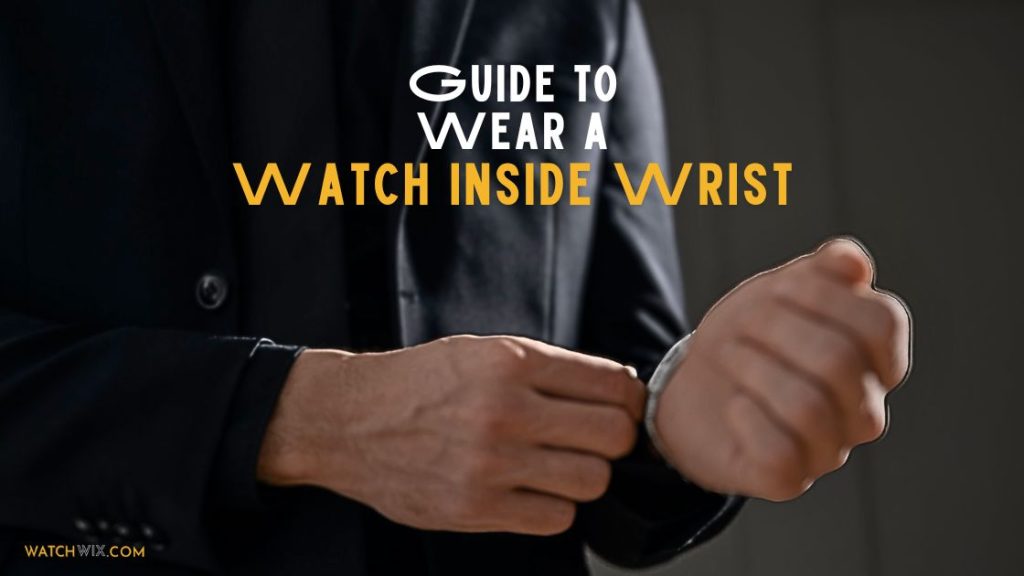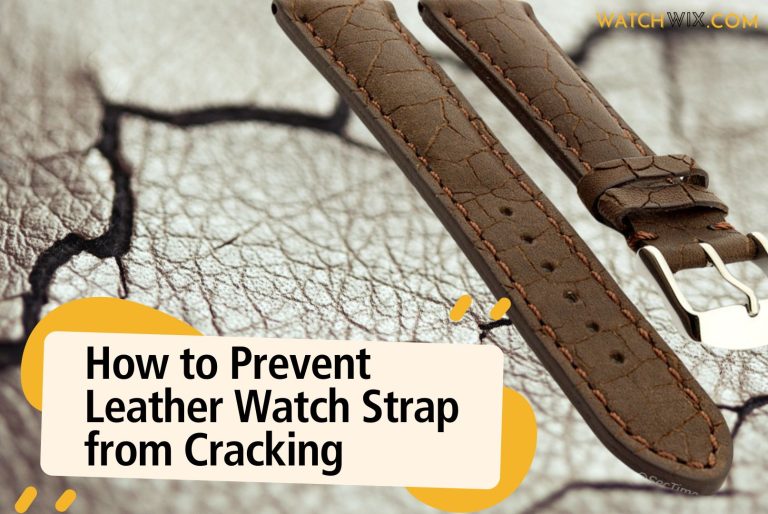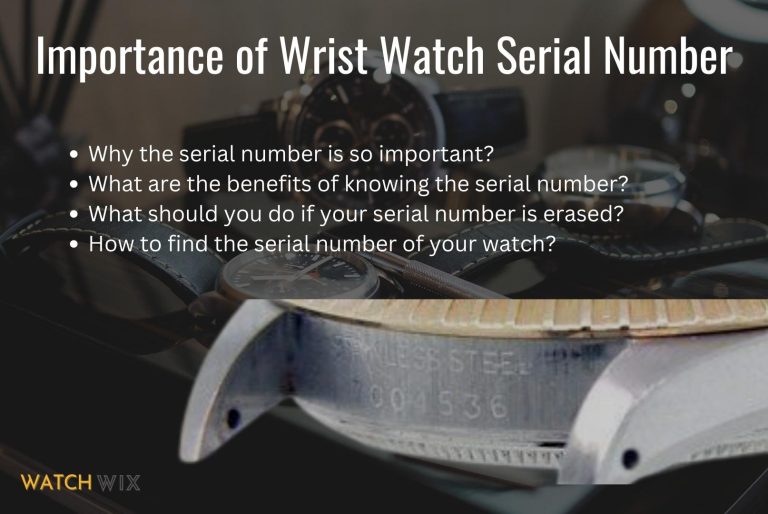How to Properly Wear a Watch Inside the Wrist
Wearing watches on the inside of the wrist is a less common than the traditional placement, but has gained attention for its unique style. This approach to watch wearing involves positioning the watch face against the underside of the wrist, with the strap fastened on top. Almost all watches are designed for wear on the outside of the wrist, but inside-the-wrist wear has gained popularity among certain individuals, including military personnel, healthcare workers, and outdoor enthusiasts.
The history of wearing watches on the inside of the wrist is a tale of practicality and innovation. This unconventional style of watch wearing has roots that trace back centuries. Originally, pocket watches were the norm, kept in waistcoat or jacket pockets and attached to chains. However, as lifestyles changed and wristwatches became more prevalent, wearers experimented with different placements. It wasn’t until the demands of specific professions, such as military personnel and healthcare workers, necessitated alternative wear methods that wearing watches inside the wrist gained prominence. Over time, this style has evolved, influenced by technological advancements, cultural shifts, and personal preferences.

Coverage of this article:
- Reasons to Wear a Watch Inside the Wrist
- Who usually Wear the Watches Inside the Wrist
- How to Properly Wear Watch Inside the Wrist
- Why Military Personnel’s Wearing Watch Inside the Wrist
- History of Wearing Watches Inside the Wrist
- Drawbacks of Wearing the Watch on the Inside of the Wrist
Reasons to Wear a Watch Inside the Wrist (also known as Upside Down or Reverse)
Wearing a watch on the inside of the wrist, also known as wearing it “upside down” or “reverse,” can be a matter of personal preference or based on some practical reasons. Following are a few reasons why people might choose to wear their watch this way:
- Protection – Wearing a watch on the inside of the wrist can offer some protection against accidental bumps and knocks, as the wrist provides a bit more cushioning than the top of the hand. The strap of the watch will get the knock rather than the dial which you need to protect more.
- Comfort – Some people find it more comfortable to wear a watch on the inside of their wrist, especially if they’re typing or performing tasks where the back of their hand is frequently facing upward.
- Style – For some, wearing a watch on the inside of the wrist is a style statement or a way to stand out from the crowd. It can be seen as unconventional or unique.
- Practicality – Wearing a watch on the inside of the wrist might be more practical and less likely to interfere with movements during the work-life like using firearms or tools.
- Preference – Ultimately, it boils down to personal preference. Some people simply prefer the way a watch looks or feels when worn on the inside of the wrist.
Who usually Wear the Watches Inside the Wrist
Wearing a watch on the inside of the wrist is not limited to any specific group of people, but there are certain individuals or professions where this style might be more common or practical.
- Military Personnel
Some members of the military may wear their watches on the inside of their wrist for practical reasons, as it can be more comfortable and less likely to interfere with equipment or uniform sleeves. - Healthcare Workers
Healthcare professionals, such as doctors and nurses, often wear their watches on the inside of their wrist to prevent accidental contamination or to avoid snagging on gloves or clothing while attending to patients. - Athletes
Certain athletes, particularly those involved in activities where wrist movement is frequent or where wrist protection is needed, might opt to wear their watches on the inside of their wrist. - Manual Laborers
People who work with their hands or engage in manual labor may find it more practical to wear their watch on the inside of their wrist to protect it from potential damage. - Outdoor Enthusiasts
Individuals who enjoy outdoor activities such as hiking, climbing, or camping may prefer to wear their watches on the inside of their wrist for added protection against bumps and scrapes. - Individuals with Sensory Sensitivity
Some individuals with sensory sensitivities or specific preferences for how objects feel against their skin may choose to wear their watches on the inside of their wrist for comfort reasons.
How to Properly Wear Watch Inside the Wrist
Wearing a watch on the inside of the wrist follows same instructions of wearing it conventionally on the outside. But there are a few considerations to ensure it’s comfortable and functional as following,
Step 01: Positioning
Place the watch face on the inside of your wrist, with the strap wrapping around the wrist and fastening securely. The watch should sit comfortably snug but not too tight, allowing for free movement of the wrist.
Step 02: Strap Length
Adjust the length of the strap so that it fits comfortably around your wrist. Make sure it’s not too loose, as this can cause the watch to slide around or become uncomfortable during movement.
Step 03: Orientation of the Dial
Ensure that the dial or face of the watch is positioned correctly for easy reading. This may require adjusting the orientation of the watch on your wrist slightly to ensure it’s facing the right way when you glance at it.
Step 04: Comfort
Pay attention to how the watch feels on your wrist. It should not pinch or dig into your skin, and the strap should not chafe or cause irritation during prolonged wear.
Step 05: Functionality
Test the functionality of the watch, including any buttons, dials, or features, to ensure they are easily accessible and operable when wearing the watch on the inside of your wrist.
Step 06: Practice
It may take some time to get used to wearing a watch on the inside of your wrist if you’re accustomed to wearing it conventionally. Practice wearing it this way for short periods until you feel comfortable with the positioning and fit.
Overall, the key is to find a comfortable and secure fit that allows you to wear the watch on the inside of your wrist without causing discomfort or hindering functionality. Adjustments may be necessary to achieve the perfect fit, so don’t hesitate to make small changes until you find what works best for you.
Why Military Personnel’s Wearing Watch Inside the Wrist
Military personals usually wear their watches on the inside of the wrist for a multitude of reasons, considering specific tactical advantages as well. Following are some typical reasons for this,
- Enhanced Focus and Awareness: Wearing the watch in this manner encourages better focus and concentration on mission-critical tasks and objectives. By minimizing distractions and allowing for quick, discreet time checks, personnel can remain fully engaged in their surroundings and responsive to changing circumstances, enhancing overall situational awareness and operational effectiveness.
- Concealment and Camouflage: By wearing the watch on the inside of the wrist, military personnel minimize the chances of reflections and glare, which could compromise their concealment and compromise operational security. This strategic placement helps maintain stealth and reduces the risk of detection by hostile forces, particularly in covert or nighttime operations.
- Enhanced Gun Handling Support: Placing the watch on the inside of the wrist facilitates smoother gun handling, allowing for more fluid movements and a natural grip on firearms. This positioning avoids interference with wrist motions crucial for aiming and firing, aiding in maintaining control and precision during combat engagements.
- Protection from Damage: Positioning the watch against the wrist reduces the risk of accidental damage, safeguarding it from impacts, scratches, and other hazards common in rugged and hostile environments. This preserves the watch’s functionality and ensures reliable timekeeping, vital for coordinating operations and maintaining synchronization among unit members.
- Streamlined Gear Compatibility: Placing the watch on the inside of the wrist ensures compatibility with other tactical gear, such as gloves and wrist-mounted equipment, without hindering mobility or access to essential tools. This ensures seamless integration into the soldier’s gear setup, optimizing efficiency and reducing the risk of equipment entanglement during dynamic operations.
- Prevention of Snagging: Wearing the watch on the inside of the wrist reduces the likelihood of it snagging on clothing, gear, or equipment, particularly in close-quarters combat or urban environments. This minimizes potential distractions and delays, allowing personnel to maintain focus on the mission and respond swiftly to emerging threats or challenges.
History of Wearing Watches Inside the Wrist
Below is the timeline-based history of wearing watches on the inside of the wrist,
Early 20th Century
- Pocket watches are the predominant timekeeping devices, worn primarily by men in waistcoat or jacket pockets.
- Women begin wearing wristwatches as decorative jewelry pieces, often adorned with gemstones and precious metals.
World War I (1914-1918)
- Military personnel, particularly soldiers in the trenches, start wearing wristwatches for practicality and convenience.
- Soldiers find that wearing watches on the inside of the wrist offers better protection and accessibility during combat situations.
Interwar Period (1918-1939)
- The trend of wearing watches inside the wrist gains momentum among aviators, who need quick access to timekeeping devices while piloting aircraft.
- Wristwatches become increasingly popular among civilians, with inside-the-wrist wear becoming a common practice in various professions.
Mid-20th Century
- Healthcare workers, including nurses and doctors, adopt the inside-the-wrist wear method to reduce the risk of contamination and interference with medical equipment.
- Technological advancements in watch design, such as rotating dials and adjustable straps, cater to individuals who prefer wearing watches inside the wrist.
Late 20th Century to Present
- The inside-the-wrist wear style becomes associated with certain fashion trends and subcultures, with some individuals embracing it as a form of self-expression.
- While less common than traditional wristwatch wear, inside-the-wrist wear continues to have dedicated enthusiasts, who appreciate its practicality, functionality, and unique aesthetic.

Drawbacks of Wearing the Watch on the Inside of the Wrist
Wearing a watch on the inside has of your wrist has many benefits, but it shares set of drawbacks too. For starters, there is a comfort factor. Having the watch face pressed against your skin and the buckle tucked underneath can cause irritation, especially if you’re wearing it for long stretches. This constant pressure and rubbing might lead to chafing, particularly if you have sensitive skin or aren’t used to wearing your watch this way. So, if comfort is a top priority for you when it comes to accessories, this might not be the best choice.
Then there’s the issue of visibility and accessibility. Unlike the traditional way of wearing a watch on the outside of your wrist, where you can easily glance at the time, checking your watch on the inside requires a more deliberate wrist movement. This adjustment might throw off your rhythm, especially if you’re always checking the time. Plus, it could make it trickier to reach watch features like buttons or dials, which are typically designed for easier access when the watch is worn conventionally.
Another downside is how the watch can mess with your clothing. It might disrupt the way your sleeves or cuffs naturally fall, especially if your clothes are snug or have buttons and zippers. Constantly readjusting your attire to accommodate the watch can get annoying fast. Plus, wearing it on the inside might mess with your layering game, especially when you’re trying to stay warm in chilly weather.
Ultimately, while wearing your watch on the inside of your wrist might seem like a cool and unique choice, it’s important to weigh these drawbacks against any potential benefits and decide if it’s the right fit for your style and lifestyle.






